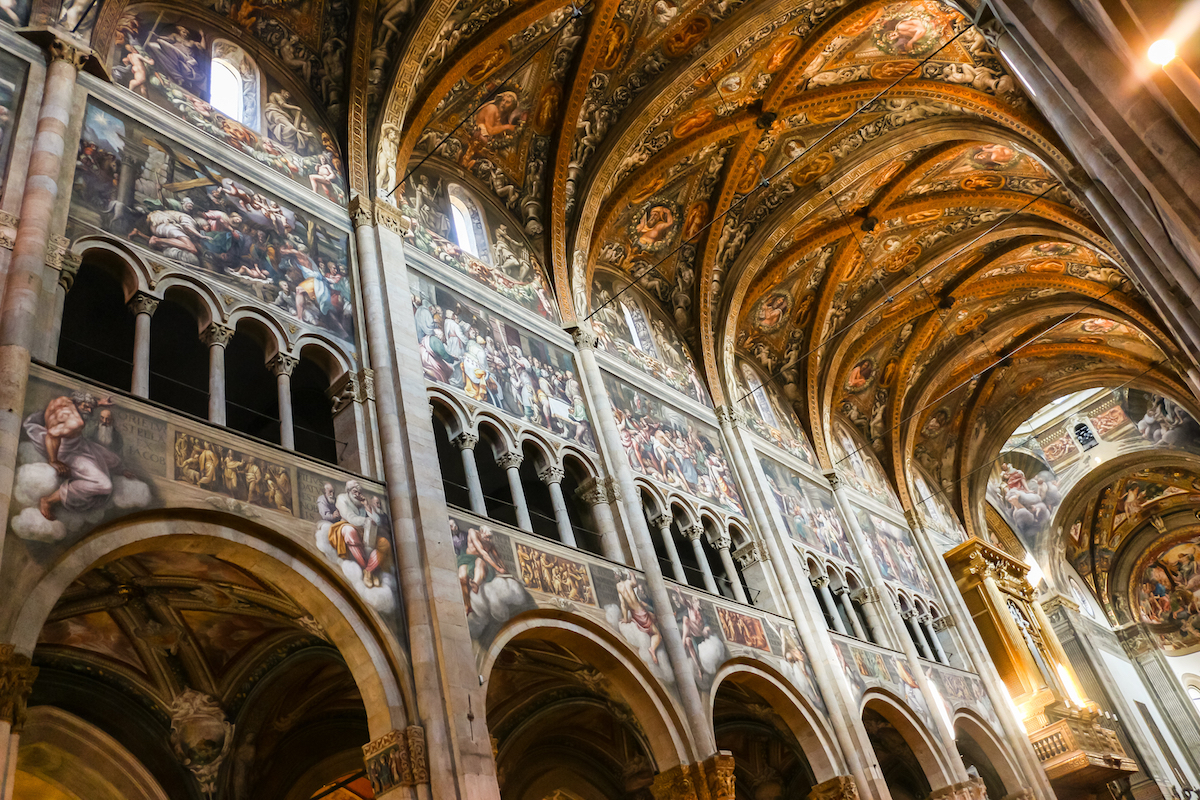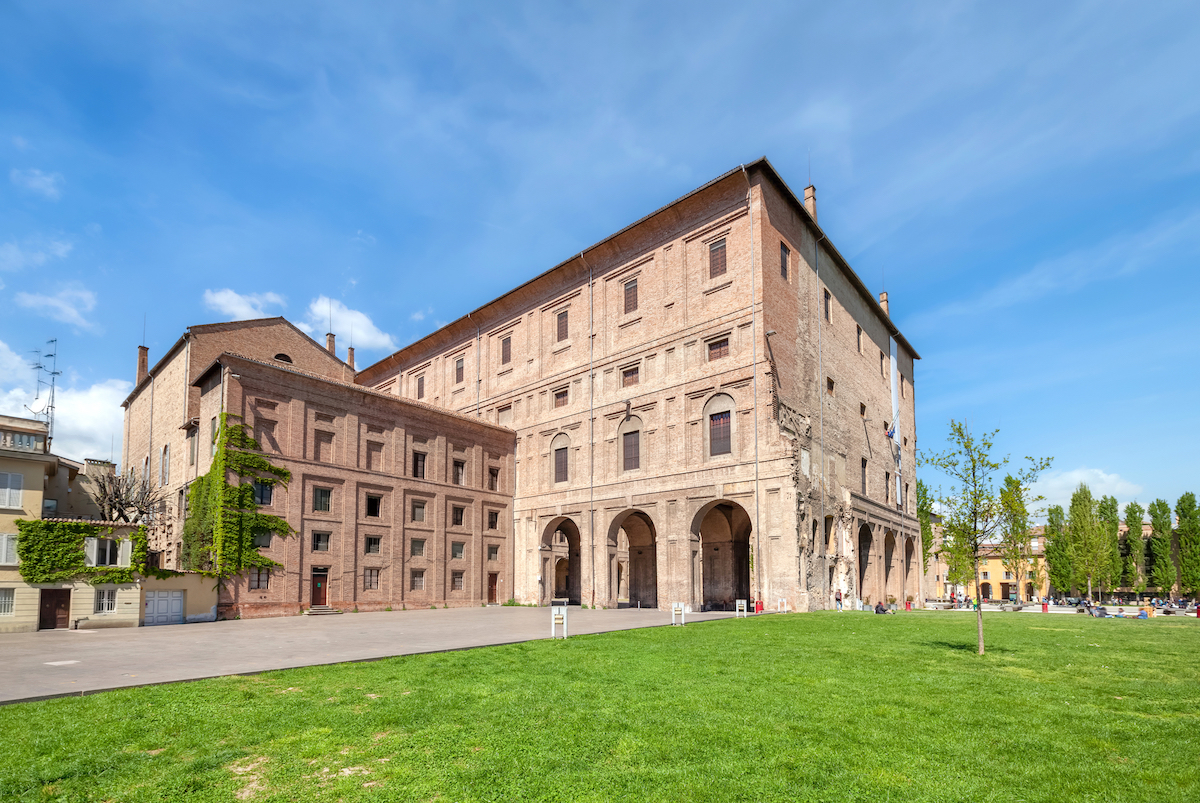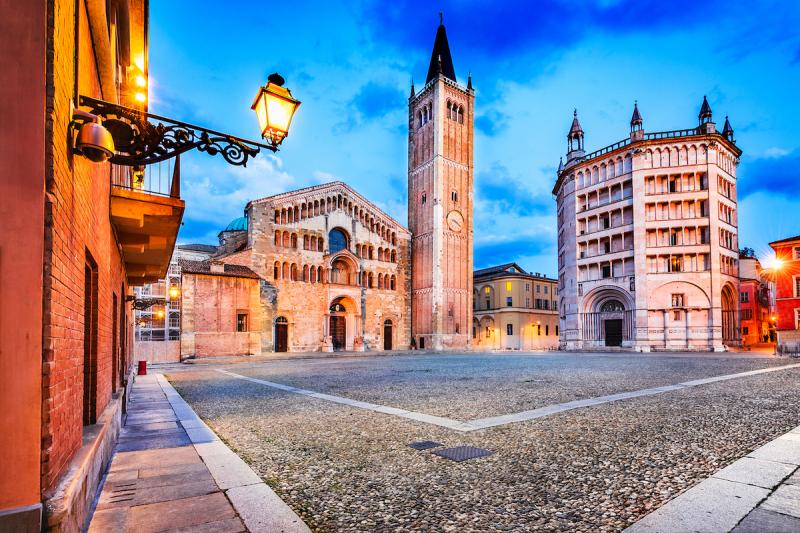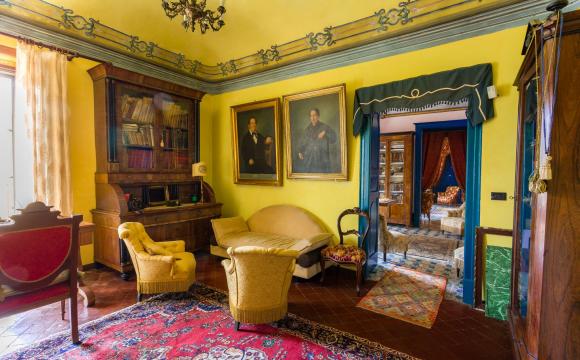Recently crowned the Italian city with best quality of life, Parma is a pleasant medium-sized town celebrated for its artistic masterpieces just as much as it is for its culinary delights.
Less than an hour by train from the regional capital of Bologna, it makes for a great day trip as its compact city center makes it easy to explore. Within a few hundred meters, there are world-class artistic treasures, such as the Duomo, Baptistery, Camera di San Paolo, Palazzo della Pilotta with the amazing Farnese Theater, and the churches of San Giovanni Evangelista and Santa Maria della Steccata.
The Parisian-looking boulevards, elegant architecture, a refined atmosphere and the delicious scents conjure up that joy of living that is typical of Emilia-Romagna, the region that is hone to Parma.
Start your day visit at Piazza Duomo, which is reached in less than 15 minutes on foot from the train station. Piazza Duomo is where you will find Parma Cathedral and the Baptistery, two of the most important monuments.
One cumulative ticket will give you access to both as well as to the Diocesan Museum, where a number of statues once placed inside the Baptistery are on display.

The Duomo is a masterpiece of Romanesque art and architecture from the 12th century. The interior is rich with works of art, so much so that you can split your visit into a Romanesque itinerary and a Renaissance itinerary. The highlight is the Assumption of the Virgin fresco by Correggio, the foremost painter of the Parma school of the High Renaissance. The fresco with saints and angels covers the dome. Another main attraction is the sculpture of the Deposition by Benedetto Antelami, considered one of the greatest architect/sculptors of the Middle Ages. This particular sculpture is a masterpiece of Italian Gothic.
The Duomo is flanked by a bell tower in Gothic style.
The Baptistery, also by Antelami, is a massive octagon-shaped building made of pink Verona marble. The inside contains sixteen arches, forming alcoves each containing a painted scene. The most striking part of the Baptistery is its painted domed ceiling.
After the Duomo visit, you may spend some time just wandering the elegant streets of Parma’s city center. Lively but not crowded, with great shops and restaurants, the center of Parma is a pleasure to explore on foot, while getting a good glimpse into the daily life of Italians as the city is not overly touristy. There are several pedestrianized areas; one of them is Via Mameli, the ‘promenade’ of Parma, which connects Piazza della Steccata to Via Cavour. Here you may stop at a café, browse the food shops with delicacies such as Prosciutto di Parma and Parmigiano Reggiano, or stop at bookstore to buy a book on the history of Parma.

Your afternoon in Parma should be dedicated to exploring the monumental complex of the Pilotta Palace, but, before that, make a stop at the nearby Camera di San Paolo, a room in the former Monastery of San Paolo, painted with frescoes by Correggio in the vault. The work is considered a prime example of illusionistic painting, and would later influence local artists such as Parmigianino.
Palazzo della Pilotta stands on Piazza della Pace. It houses the National Gallery, one of the most important Italian art galleries for the number and quality of the works; it contains works by Leonardo da Vinci (the splendid Scapigliata), Beato Angelico, Correggio, Tintoretto, Giulio Romano, Guercino, Canaletto, Carracci and others. The collections were established during the Renaissance by the Farnese family, rulers of Parma.
The other major attraction inside the Pilotta is the Farnese Theater, one of only three Renaissance theaters still in existence, along with the Teatro all’antica of Sabbioneta and the Teatro Olimpico in Vicenza, both of which inspired the design for the Teatro Farnese. It was built starting in 1618 by Ranuccio I, Duke of Parma and Piacenza, who intended to celebrate the visit of the Grand Duke of Tuscany, Cosimo II, while on his way to Milan, with a theatrical performance.

You can't leave Parma without a souvenir of the city's quintessential perfume, Violetta di Parma. Violet was the favorite flower of Maria Luigia, Napoleon's second wife and later Duchess of Parma and Guastalla from 1816 to 1847. Leather goods are also part of the typical artisan production. Watch out for the ‘Made in Parma’ brand. The greatest concentration of shops is on via Cavour and via Repubblica.
The gastronomic souvenirs of the city are the most sough after however. After all, Parma is the heart of the Italian food valley. Parma Ham, Culatello di Zibello, Parmigiano Reggiano, Salame di Felino, the Porcino Mushroom from Val di Taro and Fortana del Taro wine are just some of the most famous.
There are plenty of delis to choose from, where you will be spoiled for choice. Besides the most famous brands, make sure you discover the artisanal salumi that are produced in the province, unique and unavailable elsewhere, such as the ‘prete’, a sausage similar to zampone, typical of the Colorno area, or the ‘strolghino’, a tasty salami.







